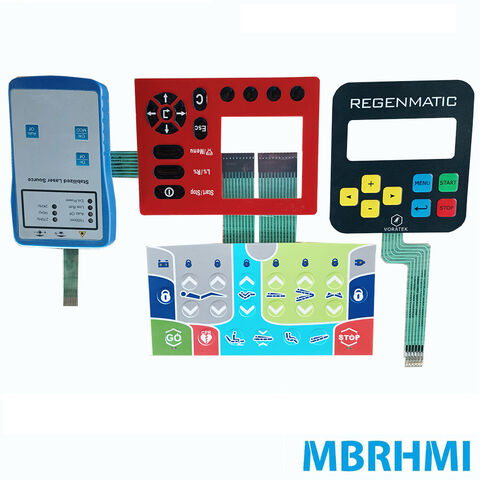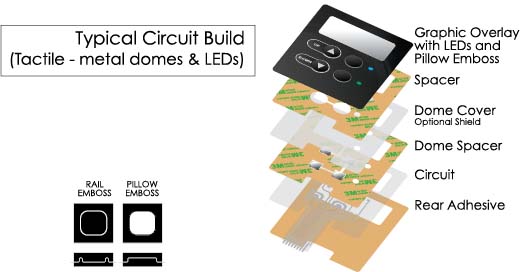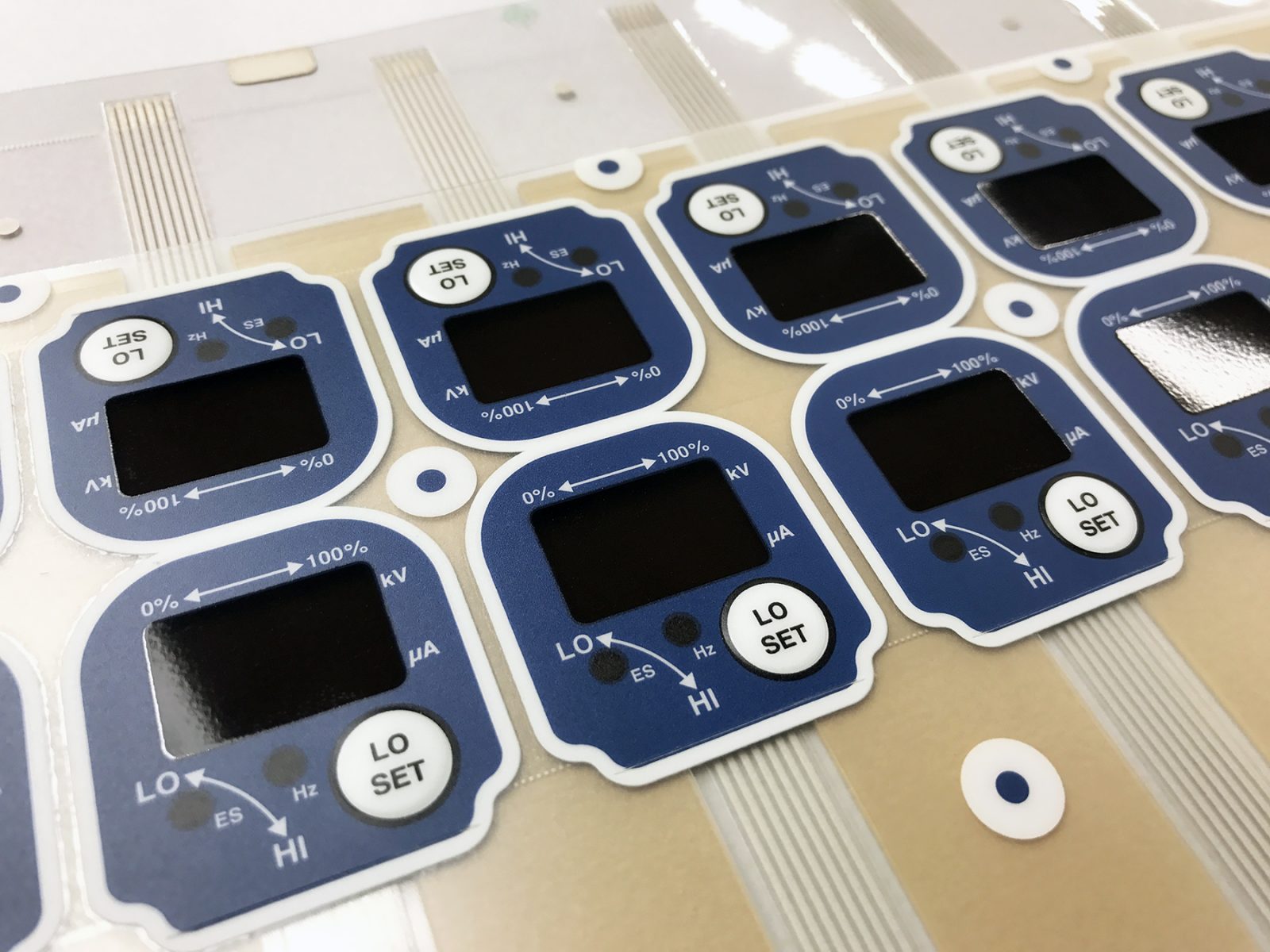Comprehending Membrane Layer Changes: The Secret to Long Lasting and Trustworthy Controls

What Are Membrane Switches?
Membrane buttons are an advanced solution in the realm of individual interface technology, incorporating performance and layout flawlessly. These devices function as a user interface in between customers and electronic systems, integrating several elements into a compact layout. Normally created from versatile, slim layers of materials, membrane buttons are developed to react to touch, enabling users to connect with equipment and digital devices properly.
The main elements of a membrane button consist of a published circuit layer, visuals overlay, and a spacer layer that prevents unexpected activation. The visuals overlay can be tailored to show brand name identification or individual preferences, improving visual appeals while making certain use. Membrane layer switches are frequently used in different applications, including clinical gadgets, consumer electronics, and industrial equipment, owing to their sturdiness and resistance to environmental aspects such as wetness and dirt.
One of the vital advantages of membrane layer buttons is their ability to hold up against damage, making them ideal for high-traffic settings. In addition, they are lightweight and require marginal area, permitting innovative layouts in item growth. Generally, membrane layer changes stand for a reliable and practical selection for modern electronic user interfaces, weding innovation with user-centric design principles.
Just How Membrane Switches Job
The procedure of membrane layer changes joints on a basic yet reliable mechanism that converts individual input right into electronic signals. When an individual presses the switch, the top layer deforms, permitting a conductive aspect in the circuit layer to make call with an equivalent conductive pad on the bottom of the visuals overlay.
The layout of membrane layer switches can differ, however they usually include domes or tactile elements to give feedback to the user, improving the total experience - membrane switch. The materials made use of in membrane switches, such as polyester or polycarbonate, add to their resilience and resistance to environmental aspects, including wetness and dirt. The printed circuits are commonly encapsulated, which protects them from wear and tear over time.
Benefits of Membrane Layer Buttons

Furthermore, membrane layer buttons are recognized for their resilience. Constructed from durable materials, they are immune to dirt, dampness, and physical wear, which dramatically expands their lifespan contrasted to typical mechanical switches. This resilience makes them specifically suitable for high-traffic atmospheres and applications requiring long life.
One more considerable advantage is the convenience of cleansing and upkeep. The smooth surface area of membrane layer switches lessens dirt accumulation and is often unsusceptible spills, making them optimal for settings that require constant sanitization.
Moreover, membrane layer switches supply a structured account, leading to a thinner style that can be integrated right into various tools without adding mass. This feature not just enhances the visual appeal but also adds to an extra ergonomic item layout.
Applications of Membrane Switches
Versatile and easy to use, membrane buttons locate applications throughout a large array of industries, including clinical gadgets, customer electronics, and commercial equipment. In read this the clinical field, these switches are indispensable to gadgets such as diagnostic tools, individual surveillance systems, and infusion pumps, where integrity and convenience of cleaning are vital. Their capacity to keep and endure rough settings performance makes them optimal for such applications.

In consumer electronics, membrane buttons are used in products like microwaves, washing devices, and remotes - membrane switch. Their smooth style enables instinctive customer interfaces, improving the general customer experience while giving durability and resistance to damage
Industrial devices additionally takes advantage of membrane layer buttons, specifically in control panels for machinery and automation systems. These switches use defense against dust and moisture, ensuring consistent efficiency in tough atmospheres. Their customizable functions enable producers to customize them to my review here details functional requirements, boosting efficiency and performance.
Choosing the Right Membrane Layer Change
When choosing a membrane button, it is necessary to think about numerous elements that influence efficiency and viability for specific applications. The main considerations include ecological problems, responsive comments, sturdiness, and design specifications.
First, examine the operating environment; switches revealed to wetness, chemicals, or extreme temperatures require specific materials to guarantee long life and capability. Next off, evaluate the requirement for tactile feedback. Depending upon user interaction, some applications may gain from a responsive response to confirm activation, while others may like a non-tactile layout for visual reasons.
Durability is another vital element; membrane layer buttons must be designed to hold up against regular usage, effects, and abrasion. Ensure the chosen button can withstand the anticipated lifecycle, especially in high-usage circumstances.

Conclusion
To conclude, membrane layer switches act as necessary elements in the design of sturdy and trustworthy control systems throughout various sectors. Their small layout, integrated with robust building and construction this link and customizable features, boosts customer communication while making certain longevity sought after environments. The convenience of membrane switches over allows for customized services that fulfill particular functional needs, strengthening their significance in contemporary innovation. As industries proceed to evolve, the significance of incorporating effective membrane layer switch options can not be overstated.
Membrane switches represent a vital element of modern-day user interface layout, mixing functionality with resilience in various applications.Membrane switches are a sophisticated service in the realm of individual interface innovation, integrating performance and style effortlessly. Commonly created from adaptable, slim layers of products, membrane layer buttons are made to react to touch, making it possible for customers to connect with equipment and digital gadgets successfully.
The layout of membrane layer switches can vary, but they frequently incorporate domes or tactile components to give responses to the individual, improving the overall experience.In conclusion, membrane switches over offer as necessary elements in the design of durable and reliable control systems throughout different industries.